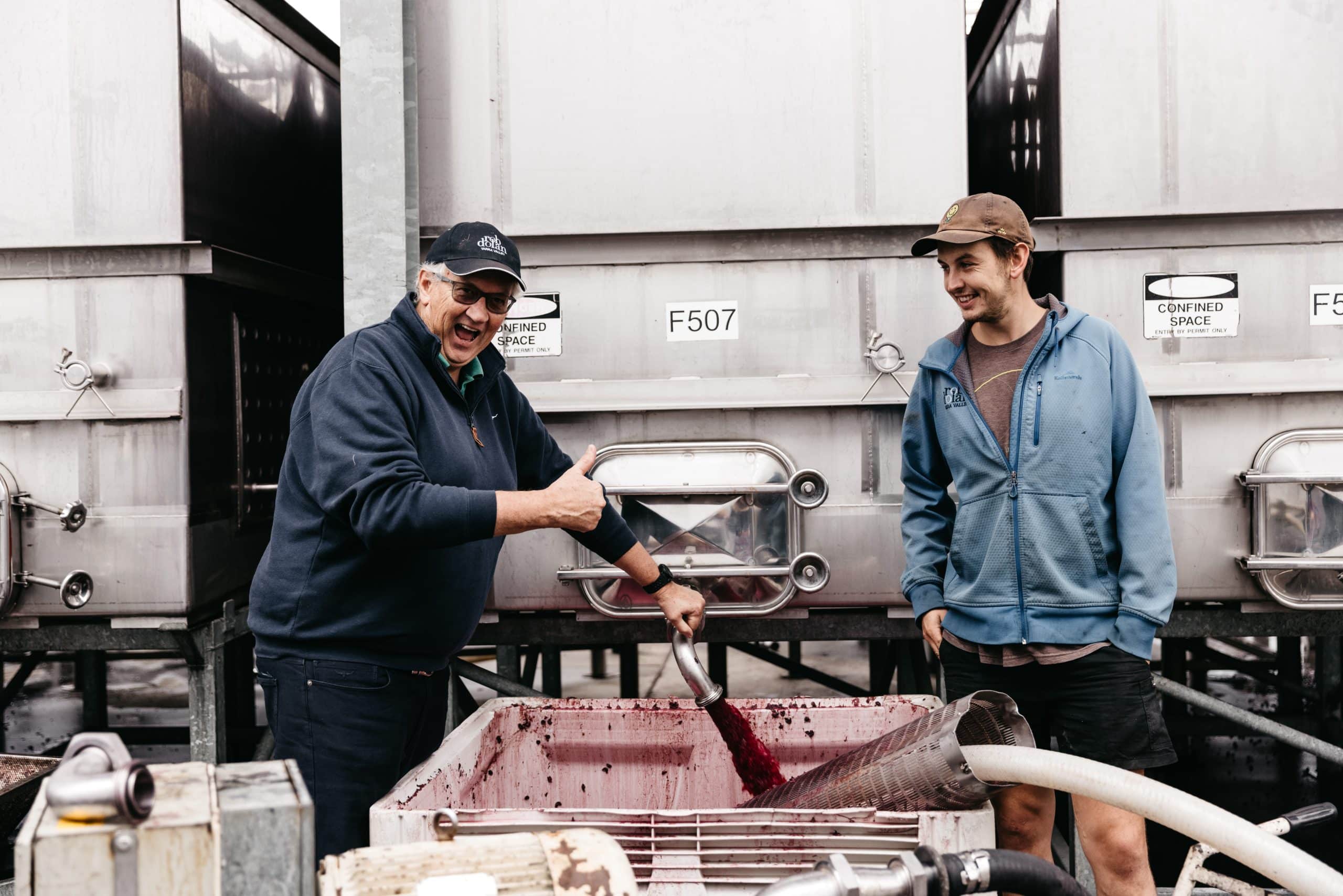
25 Jan So, what actually is vintage?
We all hear this term ‘vintage’ bandied around but most people probably have no idea what actually happens during vintage. Winemakers treat it as the vinous equivalent of the Grand Final but spread over 8 to 12 weeks. In a nutshell, it is our one and only time of the year to make wine – so it’s super fun and very stressful at the same time!
Picking the grapes
In the Yarra Valley, grapes are ready to be picked between the middle of February to the end of April. This is an absolute rule of thumb as all depends on what the weather gods throw at us. Different grape varieties ripen at different times so our vintage starts with whites then moves on to early ripening reds (Pinot Noir) and then on to what I call the ‘bigger reds’.
As the ripening progresses, our team is out in the vineyard sampling the grapes for acid, sugar (which will become alcohol) and flavours. Once the grapes are deemed ripe, we organise a day for picking and the grapes are picked either by hand or by machine. They are transported to the winery where we weigh them – we get about 70% return on grapes so 1000 kg will give us about 700 litres of juice/wine.
In the winery
In the winery, everyone is busy cleaning, cleaning, cleaning – cleaning tanks, hoses, picking bins, presses, barrels – in preparation for the onslaught of grapes. In fact, we have a saying that vintage is 90% cleaning and 10% winemaking. Whites get pressed immediately as we only ferment the juice for white wine making. Reds get crushed and the skins and the juice are sent to tank for fermentation. The skin is where the colour and tannins are so we need them present for red winemaking.
How the juice becomes wine
Fermentation is carried out by yeast. We can either add the yeast (a bit like when you make bread at home) or we can rely on the yeast present on the grape skins and in the juice to carry out fermentation (known as wild ferments – and believe me, it can be a wild!). Whites are fermented around 10 to 15oC to retain the fruit aromas and flavours. Reds need higher temperatures, around 24 to 30oC, to coax the tannin, colour and flavour compounds out of the skins. During the fermentation of the reds, a couple of times a day, we pump the juice over the skins, or plunge the skins in to the fermenting wine, to improve the extraction. The red wine is then drained off the skins either to barrel or tank before we dig out the skins (a very messy job) and press them.
The juggling act
While all the crushing, pressing, fermenting, pumping over and transferring of wine/juice to tank or barrel is happening, we are still keeping an eye on what is happening in the vineyard and what is due to come in next. It really is like juggling to ensure we get the quality of wine we want from each vineyard parcel. Vintage isn’t over until all the wine has finished fermenting, tanks are full and the cellar crew have had their end of vintage party!

– Meg Brodtmann, MW


